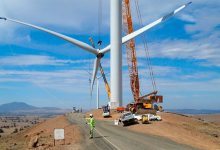New renewable energy zones and dispatchable energy storage infrastructure have been added to an influential government list of high priority infrastructure priorities, recognised for their importance in a post-Covid Australian economy.
The 2021 Infrastructure Priority List, published by the federal government agency Infrastructure Australia, has seen a number of projects focused on the clean energy transition listed as high priority initiatives.
The latest edition of the list, published on Friday, sees the creation of new renewable energy zones, the addition of dispatchable energy storage resources and investments in new hydrogen export infrastructure as key priorities for Australia over the coming decades.
Infrastructure Priority List is published to provide an evidence base for governments to identify major infrastructure needs and opportunities in the coming decades, and the 2021 update has incorporated opportunities in a post-Covid economic recovery.
This includes the expansion of Australia’s renewable energy zones as high priority initiatives, calling for the expansion of Australia’s clean energy capacity, alongside new network infrastructure and the need for more energy storage capacity.
Infrastructure Australia pointed to the Integrated System Plan developed by the Australian Energy Market Operator, which forecast that as much as 26GW of new renewable energy capacity would need to be added to the grid by 2040.
In addition to the growth of renewable energy zones, Infrastructure Australia said that the construction of new dispatchable energy storage resources was also a high priority infrastructure need, with AEMO projecting that between 6 and 19GW of dispatchable storage capacity would be needed over the next two decades.
“Introduction of new firming capacity will complement variable renewable energy sources and support the transition to the new electricity mix. However, without sufficient dispatchable capacity, there is a risk of power outages and load shedding in the NEM,” the report says.
By adding the expansion of renewable energy zones to the priority list, Infrastructure Australia designated REZs as a national initiative, suggesting there is a role for all levels of government to drive new investment.
The creation of a national fast charging network for electric vehicles along major highways was retained on the list after being first added as a high priority initiative in 2019, with the new charging infrastructure required to serve the expected future adoption of electric vehicles.
Infrastructure Australia chief executive Romilly Madew said the latest infrastructure priority list reflected the need to invest in projects that will help improve the resilience of the Australian economy to shocks, like those caused by Covid-19 and climate change.
“The 2021 Infrastructure Priority List is a comprehensive overview of nationally-significant infrastructure needs, providing an investment roadmap to guide Australia’s economic recovery and improve quality of life as we continue to absorb and respond to the shocks of COVID-19,” Madew said.
“The importance of a robust, evidence based investment pipeline has only increased as we look to recover from the dual health and economic crises of COVID-19, and grapple with further shocks and stresses including floods and bushfires, long-lasting drought, and a changing climate.”
Infrastructure Australia said the 2021 Infrastructure Priority List was developed with consideration to five key themes, which included an expansion of Australia’s export industries, and in particular, the development of a hydrogen export industry.
“Australia’s natural characteristics and experience in energy export could enable a large hydrogen export industry in Australia,” the report says.
“Internationally, there is growing interest in the production and use of green hydrogen as an energy source, as it produces no carbon emissions. There is a significant opportunity to develop supply chains in Australia to meet potential demand in domestic and export markets.”
Industry peak body, Infrastructure Sustainability Council of Australia (ISCA), welcomed the listing of a large number of sustainable infrastructure initiatives.
“We are pleased with the clarity of criteria used to assess potential infrastructure projects and the sharper focus on world-class infrastructure that delivers social, cultural, environmental and economic value to our communities,” ISCA CEO Ainsley Simpson said.
ISCA noted that by supporting increased investment in the proposed renewable energy zones, a large amount of investment would be directed to regional communities.
“With seventy per cent of Australia’s emissions enabled by infrastructure, and a holistic approach to infrastructure investment is fundamental to our resilient, inclusive and low-emissions future,” Simpson said.










